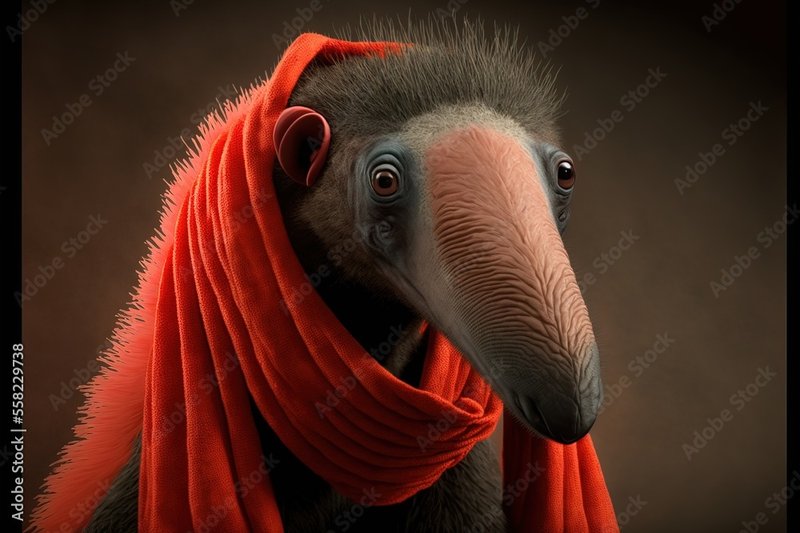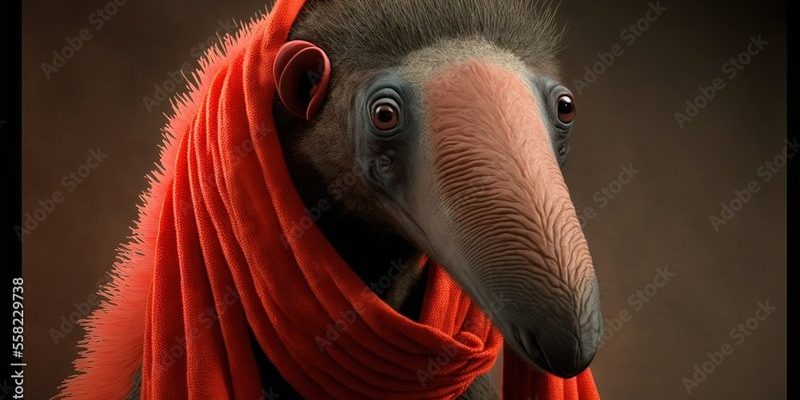
Imagine sitting around a campfire, sharing stories from the past. The giant anteater often comes up because it represents something special in many cultures. Some see it as a wise figure, while others regard it as a trickster. The stories vary, but they all connect communities to nature and the world around them. Let’s take a closer look at how this unique animal has found its place in cultural tales and folklore.
The Giant Anteater in Indigenous Lore
Indigenous tribes in South America have long viewed the giant anteater as more than just an animal. For them, it embodies traits like wisdom and patience. In many stories, the anteater is portrayed as a guardian of the forest, protecting it from harm. Its slow and deliberate demeanor often serves as a reminder to take life one step at a time.
One popular story tells of how the anteater once saved a village from a swarm of invading ants. By using its incredible sense of smell, the anteater located the ants’ nest and devised a clever plan to walk around it, keeping it safe. This tale not only highlights the anteater’s unique abilities but also underscores the importance of listening to nature and understanding one’s surroundings.
Furthermore, many Indigenous groups incorporate the giant anteater into their art and rituals. Its image appears in pottery, textiles, and carvings, symbolizing a connection to the earth. Through these representations, the anteater serves as a powerful reminder of the relationship between humans and nature.
Anteaters in Folktales and Mythology
In various folktales, the giant anteater is depicted as a creature of mystery and intrigue. For instance, in some regions, it’s believed that the anteater possesses magical healing abilities. People tell stories about how it can heal ailments by simply being present. This belief has led to the anteater being included in traditional medicine practices.
Additionally, some myths describe the anteater as a trickster figure. In one tale, it outsmarts a hungry jaguar by pretending to be dead. As the jaguar approaches, the anteater suddenly springs to life, scaring the jaguar away. This cleverness not only entertains but also teaches a lesson about using one’s wits to overcome challenges.
The role of the giant anteater in these stories often reflects the values of the culture telling them. It embodies qualities like smartness, resourcefulness, and respect for nature. These narratives remind listeners of the importance of being clever and cautious in a world full of dangers.
Artistic Representations of the Giant Anteater
The giant anteater’s distinctive appearance makes it a beloved subject for artists. You might have seen it gracing the pages of children’s books or featured in vibrant murals. Artists often focus on its long snout and bushy tail, using these features to convey emotion and movement.
In many Latin American cultures, the anteater is depicted in dance and theater, adding a dynamic flair to performances. For instance, during traditional festivals, dancers may wear elaborate anteater costumes, bringing the creature to life. These performances often have educational components, teaching younger generations about the significance of the anteater in their cultural heritage.
Moreover, contemporary artists are using the giant anteater to raise awareness about conservation issues. By featuring this endangered species in their work, they aim to highlight the fragility of its habitat and the importance of preserving biodiversity. The anteater serves as a symbol of both beauty and vulnerability in today’s world.
Symbolism of the Giant Anteater
Across cultures, the giant anteater is laden with symbolism. It often represents nourishment and sustenance due to its diet of ants and termites. Many people see the anteater as a reminder to appreciate the simple and often overlooked aspects of life. Just like the anteater focuses on finding food, we can learn to appreciate what’s right in front of us.
In some traditions, the anteater symbolizes patience and resilience. Its slow movements contrast sharply with those of faster animals, reminding us that sometimes, taking our time can be more beneficial. This trait is often emphasized in stories and teachings, encouraging a slower, more mindful approach to life.
Interestingly, in certain cultures, the giant anteater is also seen as a bringer of rain. Its foraging activities are believed to stir the soil, allowing it to hold moisture better. This connection to the weather highlights the anteater’s role in the ecosystem and how various species are interconnected.
The Giant Anteater in Modern Culture
Today, the giant anteater remains a meaningful figure in modern culture. It appears in media like movies, cartoons, and video games, often representing uniqueness and quirky charm. For example, animated films may feature a lovable anteater character who goes on grand adventures, adding a sense of fun and whimsy.
Moreover, conservation organizations leverage the giant anteater’s popularity to promote awareness of endangered species. By showcasing the anteater in campaigns, they aim to educate the public about its ecological role and the threats it faces. This approach has fostered a greater appreciation for wildlife and the environment.
Social media also plays a part in how we view the giant anteater today. With cute videos and heartwarming posts circulating online, more people are becoming aware of this fascinating creature. Platforms like Instagram and TikTok allow users to share their love for the anteater, sparking interest in protecting its natural habitat.
Lessons from the Giant Anteater
At the end of the day, the giant anteater teaches us valuable lessons about life and our relationship with nature. It encourages us to appreciate the little things, to be persistent, and to respect our environment. Whether through stories, art, or modern representations, the anteater serves as a symbol of balance and harmony in the world.
Embracing the wisdom of the giant anteater can lead us to a more thoughtful and compassionate way of living. As we reflect on its cultural significance, we gain a deeper understanding of our connection to the natural world and the importance of fostering that relationship.
In conclusion, the giant anteater is not just an animal; it’s a bridge between cultures, stories, and lessons that continue to resonate today. By appreciating its place in folklore and art, we can celebrate the richness of nature and the shared tales that unite us all.

